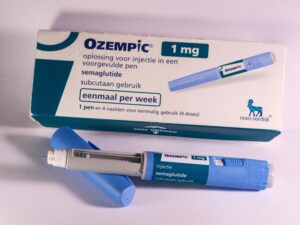Many people are questioning the timeline for the speedy rollout of COVID-19 vaccines, pointing to other vaccines that have taken decades to create. Over a decade of research in genetic engineering, the emergence of synthetic biology, and quantum leaps in computing have all contributed to fast-tracking vaccine development.
Vaccines using traditional methods take years to develop and manufacture. The Polio vaccine, for example, took nearly 20 years to develop. They become obsolete if the virus evolves, and the immune response they produce is often weak.
The emerging field of synthetic biology is answering the challenge to engineer vaccines that overcome these obstacles.
Scientists can now design and build nanoparticles out of proteins and attach viral molecules to produce a vaccine that provides immunity to COVID-19. The nanoparticles can be studded with molecules from additional coronaviruses to, scientists hope, protect against the original SARS virus, MERS, and, SARS-CoV-2.
Synthetic biologists, using super-computers and artificial intelligence, are designing new, self-assembling protein nanoparticles studded with viral proteins, called antigens. These porcupine-like particles would be the principal component of a vaccine. If tests in lab animals of the first such nanoparticle vaccine are any indication, it should be more potent than either old-fashioned viral vaccines like those for influenza or the viral antigens on their own (without the nanoparticle).
Dr. Anthony Fauci, Director of the National Institute of Allergy and Infectious Diseases said,
“The speed is a reflection of years of work that went before.”
The way in which the top two U.S. vaccine candidates were developed will be the gold standard for future vaccine development, particularly if the long-term efficacy and safety match data produced in clinical trials.
“I think we enter into a golden age of vaccinology by having these types of new technologies,” said Dr. C. Buddy Creech, a Vanderbilt University vaccine expert.
Both vaccines, made by Pfizer and BioNTech, and the one manufactured by Moderna, in cooperation with the National Institutes of Health, are messenger RNA(mRNA), vaccines.
A Multi-billion-dollar investment by private industry and the U.S. Government also assisted in shortening the development time.
However, long before the SARS-Cov-2 virus appeared in China, scientists at the National Institute of Health and researchers at the University of Pennsylvania had gained much knowledge about other coronaviruses from prior research of SARS and MERS.
Dr. Tal Zaks, Chief Medical Officer of Massachusetts-based Moderna, said, “When the pandemic started, we were on a strong footing both in terms of the science and experience handling mRNA.”
The traditional method of manufacturing viruses or viral components required growing them in giant vats, or in the case of most flu vaccines, in chicken eggs, then removing the contaminants in a purification process.
The creation of an mRNA vaccine begins with a fragment of genetic code that carries instructions for making the precise proteins needed to activate the immune system.
According to Dr. Drew Weissman, Researcher at the University of Pennsylvania, “Instead of growing up a virus in a 50,000-liter drum and inactivating it, we could deliver RNA and our bodies make the protein, which starts the immune response.”
in an effort to develop drugs and vaccines derived from mRNA fifteen years ago, Weisman found that injecting animals with genetic material induced harmful inflammation.
Weissman and a UPenn colleague who is currently at BioNTech, Katalin Kariko, resolved the problem with a minor modification. “They could essentially make a stealth RNA,” stated Pfizer Chief Scientific Officer Dr. Philip Dormitzer.
Other researchers have utilized a fat coating, called lipid nanoparticles, that enabled the RNA to enter the cells and start producing the “target” protein.
Dr. Barney Graham, Deputy Director of the NIH’s Vaccine Research Center, along with his research team at the NIH, discovered how to use the “spike” protein that covers the SARS-C0V-2 virus, to elicit a response from the immune system.
The design of the protein is crucial. As it turns out, the surface proteins that allow a vast array of viruses to latch onto human cells are “shapeshifters.” Creating a vaccine using the wrong shaped-protein will not prevent infection.
Dr. Fauci said, “You could put the same molecule in one way and the same molecule in another way and get an entirely different response,”
In 2013, Dr. Graham and colleague Jason McLellan, while doing research on a long-failed vaccine for a childhood respiratory ailment called Respiratory Syncytial Virus (RSV), discovered the correct structure for an RSV protein, and found genetic modifications that maintain the proper shape of the protein in order to facilitate vaccine development.
They applied this technique to other viruses, including the Coronavirus, that causes Middle Eastern Respiratory Syndrome (MERS), hoping to find a viable vaccine.
Graham told the AP in February of 2020, “That’s what put us in a position to do this rapidly. Once you have that atomic-level detail, you can engineer the protein to be stable.”
Germany’s BioNTech partnered with New York-based Pfizer in 2018 to develop a more advanced mRNA-based flu vaccine, thus giving both companies a head start in creating a COVID-19 vaccine.
In January of this year, shortly after the novel coronavirus was discovered in China, BioNTech CEO Ugur Sahin focused on research to develop a COVID-19 vaccine, employing the same methods.
On January 11, 2020, Chinese scientists shared the genetic map of the virus with researchers around the world. This allowed scientists to immediately begin the task of synthetically creating the spike protein.
In less than a year since the outbreak occurred in China, starting a pandemic, there are now multiple vaccines that are ready to be approved, and some are already being distributed. It is expected that Pfizer’s vaccine will be available here in the United States as early as Friday, December 11.










